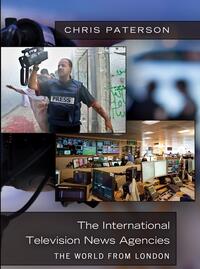
For over half a century, a small set of London-based companies have either created or globally distributed most of the iconic television images of international events. These journalists play a leading role in shaping how we understand the world, yet there has been little study of them and their practices. This book attempts to rectify this gap by providing the first comprehensive study of how television news agencies work, and describing a system of news production which has shaped our shared visual history since the 1950s. Spanning over twenty years of data gathering, document analysis, video content analysis, news production ethnography, and interviews, the book discusses their crucial role as agents of globalization, how they manufacture our image of the world, and their dangerous work providing images of conflict. The book is a tribute to this small and largely unknown tribe of journalists, but is also a warning that the public might better understand the power and potential harm of the system in which they operate.